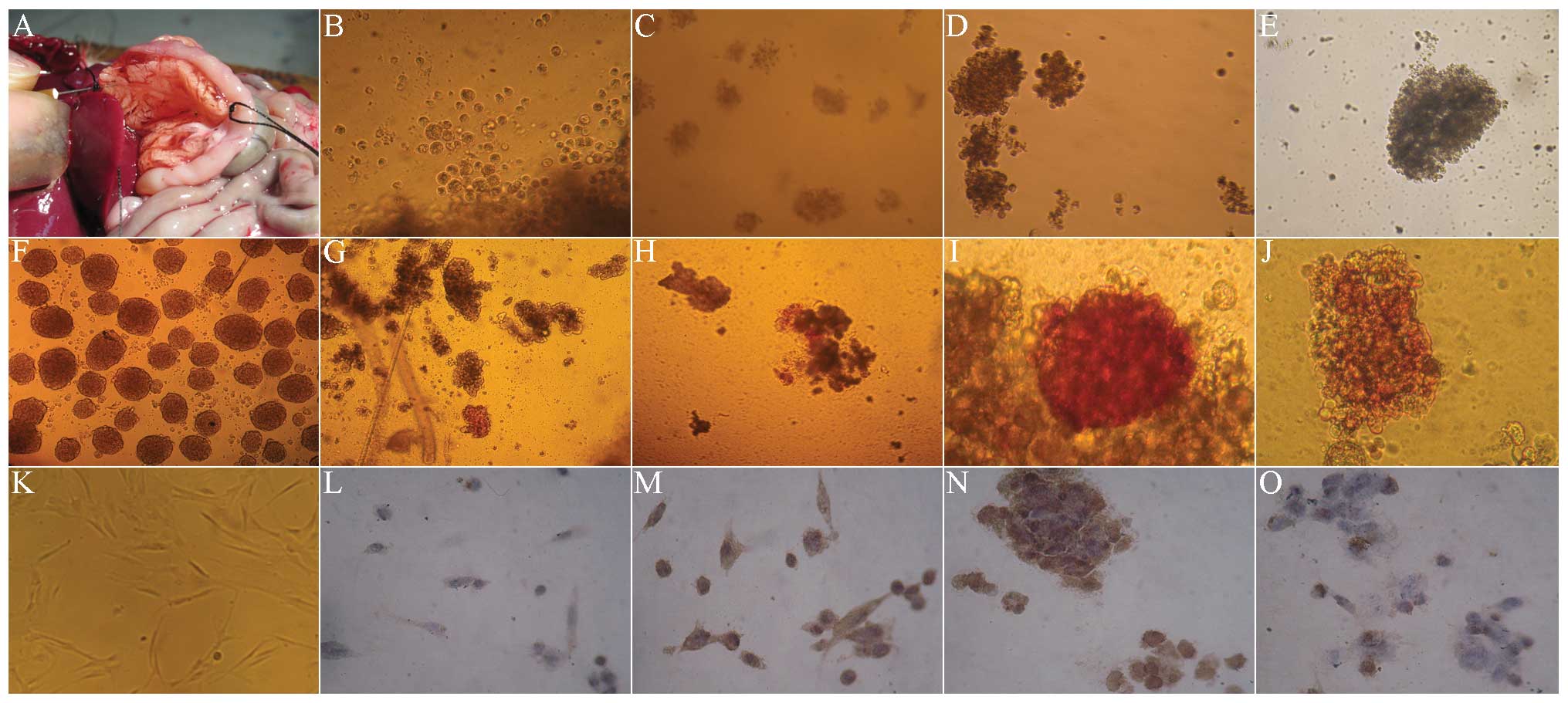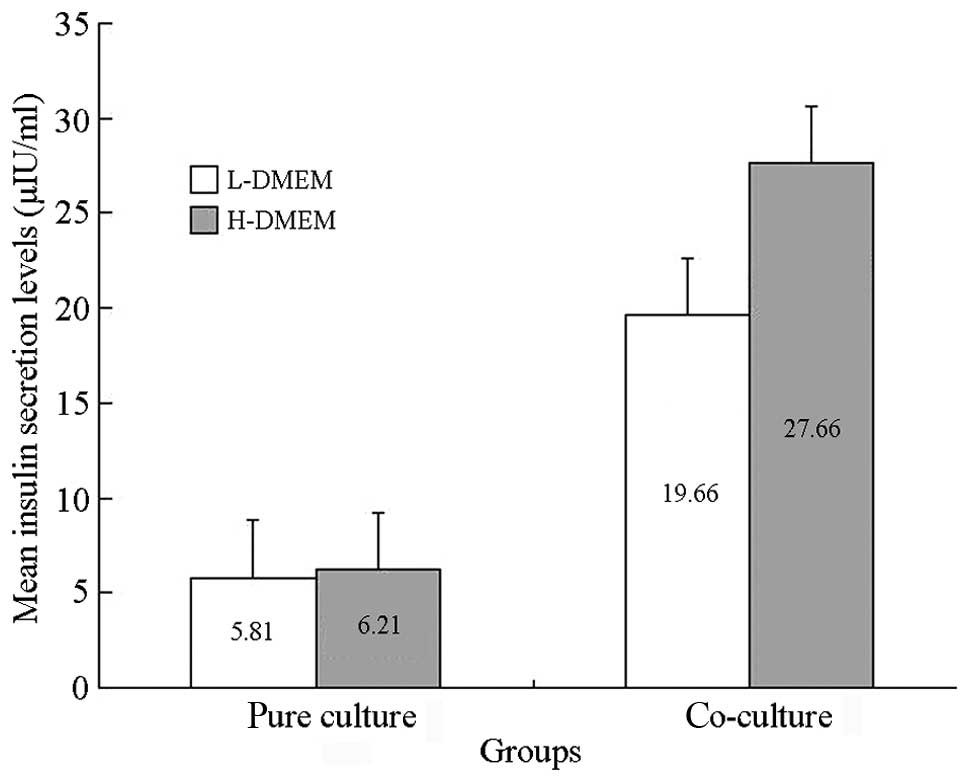|
1
|
Kroon E, Martinson LA, Kadoya K, et al:
Pancreatic endoderm derived from human embryonic stem cells
generates glucose-responsive insulin-secreting cells in vivo. Nat
Biotechnol. 26:443–452. 2008. View
Article : Google Scholar : PubMed/NCBI
|
|
2
|
Chen S, Borowiak M, Fox JL, et al: A small
molecule that directs differentiation of human ESCs into the
pancreatic lineage. Nat Chem Biol. 5:258–265. 2009. View Article : Google Scholar : PubMed/NCBI
|
|
3
|
Alipio Z, Liao W, Roemer EJ, et al:
Reversal of hyperglycemia in diabetic mouse models using
induced-pluripotent stem (iPS)-derived pancreatic beta-like cells.
Proc Natl Acad Sci USA. 107:13426–13431. 2010. View Article : Google Scholar : PubMed/NCBI
|
|
4
|
Bar-Nur O, Russ HA, Efrat S and Benvenisty
N: Epigenetic memory and preferential lineage-specific
differentiation in induced pluripotent stem cells derived from
human pancreatic islet beta cells. Cell Stem Cell. 9:17–23. 2011.
View Article : Google Scholar : PubMed/NCBI
|
|
5
|
Cardinale V, Wang Y, Carpino G, et al: The
biliary tree - a reservoir of multipotent stem cells. Nat Rev
Gastroenterol Hepatol. 9:231–240. 2012. View Article : Google Scholar : PubMed/NCBI
|
|
6
|
Liu J, Liu Y, Wang H, et al: Direct
differentiation of hepatic stem-like WB cells into
insulin-producing cells using small molecules. Sci Rep.
3:11852013.PubMed/NCBI
|
|
7
|
Yechoor V, Liu V, Espiritu C, et al:
Neurogenin3 is sufficient for transdetermination of hepatic
progenitor cells into neo-islets in vivo but not
transdifferentiation of hepatocytes. Dev Cell. 16:358–373. 2009.
View Article : Google Scholar : PubMed/NCBI
|
|
8
|
Smukler SR, Arntfield ME, Razavi R, et al:
The adult mouse and human pancreas contain rare multipotent stem
cells that express insulin. Cell Stem Cell. 8:281–293. 2011.
View Article : Google Scholar : PubMed/NCBI
|
|
9
|
Zhou Q, Brown J, Kanarek A, et al: In vivo
reprogramming of adult pancreatic exocrine cells to beta-cells.
Nature. 455:627–632. 2008. View Article : Google Scholar : PubMed/NCBI
|
|
10
|
Ho JH, Tseng TC, Ma WH, et al: Multiple
intravenous transplantations of mesenchymal stem cells effectively
restore long-term blood glucose homeostasis by hepatic engraftment
and β-cell differentiation in streptozocin-induced diabetic mice.
Cell Transplant. 21:997–1009. 2012.PubMed/NCBI
|
|
11
|
Kim SJ, Choi YS, Ko ES, et al:
Glucose-stimulated insulin secretion of various mesenchymal stem
cells after insulin-producing cell differentiation. J Biosci
Bioeng. 113:771–777. 2012. View Article : Google Scholar : PubMed/NCBI
|
|
12
|
Chang C, Wang X, Niu D, et al: Mesenchymal
stem cells adopt beta-cell fate upon diabetic pancreatic
microenvironment. Pancreas. 38:275–281. 2009. View Article : Google Scholar : PubMed/NCBI
|
|
13
|
Lin G, Wang G, Liu G, et al: Treatment of
type 1 diabetes with adipose tissue-derived stem cells expressing
pancreatic duodenal homeobox 1. Stem Cells Dev. 18:1399–1406. 2009.
View Article : Google Scholar : PubMed/NCBI
|
|
14
|
Fumimoto Y, Matsuyama A, Komoda H, et al:
Creation of a rich subcutaneous vascular network with implanted
adipose tissue-derived stromal cells and adipose tissue enhances
subcutaneous grafting of islets in diabetic mice. Tissue Eng Part C
Methods. 15:437–444. 2009. View Article : Google Scholar
|
|
15
|
Lee J, Wen J, Park JY, et al: Reversal of
diabetes in rats using GLP-1-expressing adult pancreatic duct-like
precursor cells transformed from acinar to ductal cells. Stem Cells
Dev. 18:991–1002. 2009. View Article : Google Scholar : PubMed/NCBI
|
|
16
|
Trivedi HL, Vanikar AV, Thakker U, et al:
Human adipose tissue-derived mesenchymal stem cells combined with
hematopoietic stem cell transplantation synthesize insulin.
Transplant Proc. 40:1135–1139. 2008. View Article : Google Scholar : PubMed/NCBI
|
|
17
|
Gabr MM, Sobh MM, Zakaria MM, Refaie AF
and Ghoneim MA: Transplantation of insulin-producing clusters
derived from adult bone marrow stem cells to treat diabetes in
rats. Exp Clin Transplant. 6:236–243. 2008.PubMed/NCBI
|
|
18
|
Li Y, Zhang R, Qiao H, et al: Generation
of insulin-producing cells from PDX-1 gene-modified human
mesenchymal stem cells. J Cell Physiol. 211:36–44. 2007. View Article : Google Scholar : PubMed/NCBI
|
|
19
|
Chen LB, Jiang XB and Yang L:
Differentiation of rat marrow mesenchymal stem cells into
pancreatic islet beta-cells. World J Gastroenterol. 10:3016–3020.
2004.PubMed/NCBI
|
|
20
|
Yang L, Li S, Hatch H, et al: In vitro
trans-differentiation of adult hepatic stem cells into pancreatic
endocrine hormone-producing cells. Proc Natl Acad Sci USA.
99:8078–8083. 2002. View Article : Google Scholar : PubMed/NCBI
|
|
21
|
Woodbury D, Schwarz EJ, Prockop DJ and
Black IB: Adult rat and human bone marrow stromal cells
differentiate into neurons. Neur Sci Res. 61:364–370. 2000.
View Article : Google Scholar : PubMed/NCBI
|















